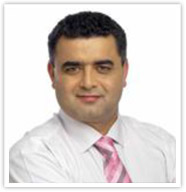|
Dr Derek Mahony - Interceptive Orthodontic Treatment in the Mixed Dentition PART 3 |
 |
Learning Objectives:
The identification, evaluation, control and neutralization of worsening factors in a developing malocclusion.
Review of facial growth patterns and a rational choice of diagnostic and therapeutic orthodontic treatment procedures.
Doctors will be shown how to minimize skeletal, dentoalveolar and muscular problems, by the end of the transition to the permanent dentition.
Program Outline:
- Interceptive orthodontics
- Growth modification
- Patient co-operation
- Early treatment philosophy
- Age 3-7 diagnosis and treatment
- Oral habits: thumb, tongue, pacifier
- Posterior cross bite
- Anterior cross bite
- Allergies, adenoids and airways
- Eruption problems
- 2x4 straightwire appliance in mixed dentition
- Harmonizing width of the dental arches
- Improving speech problems
- Simplifying and/or shorting treatment time for later corrective orthodontics
- Reducing the likelihood of impacted permanent teeth
- Maintaining leeway space
- Myo-functional therapy
- Maintaining early treatment changes as the face matures
- Interceptive therapies in Class III malocclusions
- Planas direct tracks technique
- Treatment and prevention of craniomandibular disorders in paediatric dentistry
- Prevention and treatment of periodontal problems in interceptive orthodontics
- Prevention and treatment of dental trauma
- WHY TREAT EARLY?
- Leeway space can be used to advantage in the mixed dentition.
- Maxillary first molars can be derotated and distalised before the eruption of the second molars.
- Spontaneous drift is also more effective in the developing dentition and functional appliances can be used during a period of favourable growth.
- Understanding when to treat is based on the identification, evaluation, control and neutralization of worsening factors of an initial malocclusion. This requires a knowledge of factors such as growth patterns and a rational choice of diagnostic and therapeutic treatment procedures. The orthodontic practitioner must have a thorough understanding of craniofacial growth and of the development of the dental arches in order to provide the patient with the most effective and efficient regimen of treatment.
- The concept of early treatment must be defined further within the context of overall orthodontic intervention to derive principles to guide the clinician in providing effective early treatment. It is the goal of early treatment to minimize or eliminate skeletal, dentoalveolar and muscular problems by the end of the transition to the permanent dentition. At this time, it is hoped that skeletal imbalances have been resolved in all three planes of space and that major abnormalities in the occlusion may be corrected so that a relatively straight-forward final fixed appliance phase can resolve the remaining problems.
BENEFITS OF EARLY TREATMENT
- Influence jaw growth in a positive manner
- Harmonize width of the dental arches
- Improve eruption patterns
- Lower risk of trauma to protruded upper incisors
- Correct harmful oral habits
- Improve aesthetics and self esteem
- Simplify and/or shorten treatment time for later corrective orthodontics
- Reduce the likelihood of impacted permanent teeth
- Improve some speech problems
- Preserve or gain space for erupting permanent teeth
Read More About Derek Mahony
|
|
|
|